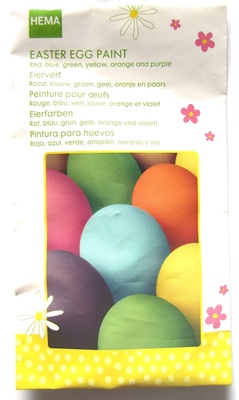Peinture pour Œufs de Pâques - Heitmann - 1 sachet de 6 tablettes
This product page is not complete. You can help to complete it by editing it and adding more data from the photos we have, or by taking more photos using the app for Android or iPhone/iPad. Thank you!
×
Barcode: 2076381099993 (EAN / EAN-13)
Common name: Peinture pour Œufs de Pâques
Quantity: 1 sachet de 6 tablettes
Packaging: Plastic
Categories: Food additives, Food colorings, fr:Colorants pour oeufs
Labels, certifications, awards:
Green Dot
Stores: Hema
Countries where sold: France






